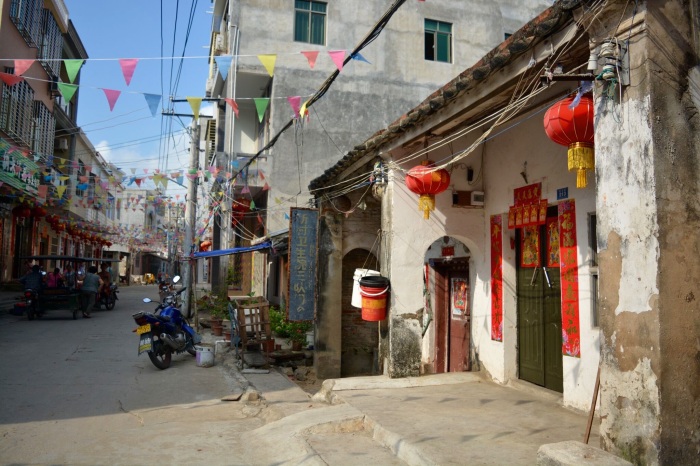The appreciation of seafood in China is as much visual as it is culinary. Every reputable seafood restaurant is lined with glass tanks of strange fish, some of them even inedible, enticing customers and performing abundance. Some of these are wild-caught, it’s true, but in Sanya many are supplied by a special type of artificial reef to the north: the floating fishing village of Lingshui.



From a distance it looks like many of the water villages that decorate coastlines along the South China Sea. Well-loved and scrappy houses jostle each other offshore, busted wood boats shuttling villagers to-and-from land for school and work. But where one might expect a front lawn on a suburban American home, Lingshui homes keep an aquaculure pen. Like you might mow the lawn, women stride along thin wood planks and fish out bad specimen. Men sprinkle fish feed. Dogs prance up and down the “front yard” along the gangways, barking at intruders with angry curiosity. It’s a space-effective approach to fish farming and insurance against a bad month of fishing at sea.

I hired a boat, gesturing and signing with chinese hand signals for numbers to haggle. The captain was kind and generous, taking me to visit friends on other boats as they scaled or sorted fish. Kids perched in doorways and on ledges. I’d gesture “camera” and “okay?” to ask to take a photo. Some shook their heads, some shrugged, others gave a big wave before I snapped a shot. The light was dense and low as we slowly puttered through the village. Just beyond the main blocks of houses, larger aquaculture pens served an explicitly commercial purpose the aquaculture lawns seemed to be for personal consumption as much as they were for sale.
There’s so much to be said for the house designs:
The local fish market is the more typical tourist attraction. Wandering through, I saw women masterfully butchering eels and tuna, grandfathers smoking and commenting on the visitors walking by, bike tourists stopping in for some fruit juice as they cycled the island. Many of the fish on sale are endangered or at-risk, like seahorses, but China has few agents to enact its already-lax regulation. Yet another arena where TNC China’s new marine program has work to do.

The aquaculture village is more of a gesture at an artificial reef, but to me is one example of adaptation and agency in a changing global marine ecology. An entire village, while modeled after traditional water villages, is designed to sustain a contemporary diet of and economic demand for fish. Using new tools to subsidize old diets, aquaculture becomes the new normal. How much to we even register a difference? Technologies that mimic fading ecologies become embedded in the way Chinese fisherfolk live. We design our worlds, and it gets harder and harder to see how much the world has actually changed. I’m just trying to keep track.




Love,
Rennie






























